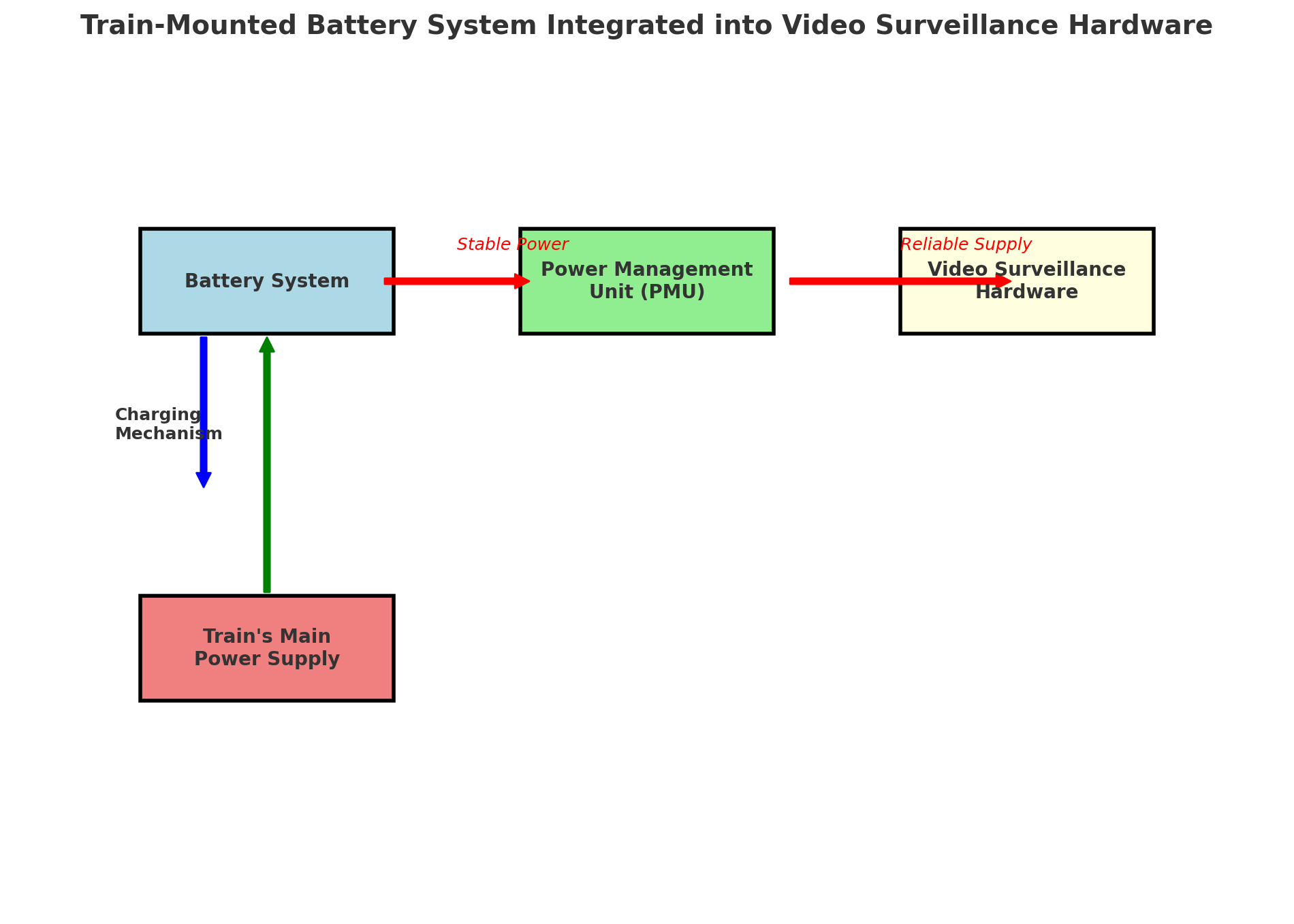
In today’s railway operations, onboard video surveillance systems are integral to passenger safety and security. But how are these systems powered in the complex, dynamic environment of a moving train? With challenges like fluctuating voltage, extreme vibrations, and harsh environmental conditions, reliable power supply systems are critical. Let’s explore the advanced methods that keep train surveillance systems running efficiently.
From robust onboard batteries to innovative Power over Ethernet (PoE) solutions, the power systems used in train video surveillance are engineered to handle the unique demands of rail environments. Understanding these solutions helps stakeholders make informed decisions for their specific applications.
At our company, leveraging over 20 years of experience in railway security technology, we specialize in designing power solutions that ensure seamless surveillance operation under the most challenging conditions. Here’s an insider look at the key methods powering onboard video surveillance systems.
ensuring stable power supply is foundational to effective train video surveillance.
reliable power prevents interruptions in surveillance. true
any generic power supply can suffice in rail environments. false
What Are the Primary Power Supply Methods?
Train onboard video surveillance systems rely on several distinct power supply methods, each designed to address the specific challenges of rail environments. These include onboard batteries, point-to-point power, centralized power systems, and PoE technology.
Each method has its strengths. Batteries ensure reliability during power failures, point-to-point power offers simplicity, centralized systems support scalability, and PoE reduces wiring complexity while increasing flexibility.
Onboard Batteries: Trains are equipped with high-capacity batteries providing DC power to video surveillance systems. This ensures continued operation during power outages or voltage fluctuations.
Point-to-Point Power: This method connects cameras directly to power sources via dedicated lines. While simple, it requires careful wiring design to avoid disruptions.
Centralized Power: Centralized systems distribute power to multiple cameras from a single location. This simplifies maintenance but demands high-reliability components.
PoE: By delivering both power and data through a single Ethernet cable, PoE significantly reduces installation complexity and offers great scalability.
Centralized power systems simplify maintenance for large installations. True
Centralized systems are inherently more reliable than PoE. False
How Does Battery Power Ensure Continuous Operation?
Battery power is a backbone of reliable train video surveillance systems, ensuring that cameras and recording devices function uninterrupted, even during power outages or fluctuations.
High-capacity onboard batteries are engineered to withstand the rigors of train operation, such as vibration and temperature extremes, ensuring consistent performance for surveillance systems.

Battery systems often include DC-DC converters to stabilize voltage, delivering the precise power required by sensitive equipment such as cameras and network video recorders (NVRs). Additionally, advanced battery setups are designed to handle rapid discharge and recharge cycles, maximizing efficiency in dynamic rail environments.
Train-mounted batteries provide stable power during outages. True
Batteries alone can sustain high-power surveillance systems indefinitely. False
What Makes PoE the Future of Train Surveillance?
PoE (Power over Ethernet) technology is transforming train video surveillance by combining power and data transmission into a single cable, streamlining installation and increasing flexibility.
With PoE, cameras and other surveillance devices can be powered through Ethernet cables, eliminating the need for separate power wiring and simplifying system deployment.
PoE offers a flexible, cost-effective solution for powering surveillance devices. By integrating power delivery with data transmission, PoE reduces cable clutter and supports scalable camera setups. However, for high-power applications, PoE may require supplemental power sources to ensure all devices operate effectively.
PoE simplifies installation and reduces wiring complexity. True
PoE alone can handle all power demands of advanced surveillance systems. False
How Do DC-DC Converters Solve Voltage Challenges?
DC-DC converters are essential for adapting a train’s main power supply to meet the specific voltage requirements of onboard video surveillance systems, ensuring operational stability.
These converters stabilize and regulate voltage, protecting sensitive electronic components from damage caused by voltage fluctuations or electromagnetic interference (EMI).
Engineered for harsh railway conditions, DC-DC converters manage wide voltage ranges and reduce noise to ensure the smooth operation of surveillance systems. Advanced models also incorporate features like surge protection and thermal management, further enhancing reliability in demanding environments.
DC-DC converters stabilize voltage for sensitive equipment. True
All DC-DC converters perform equally well across different train systems. False
Conclusion
Reliable power is the backbone of any train video surveillance system. Whether leveraging the resilience of onboard batteries, the simplicity of PoE, or the voltage stabilization of DC-DC converters, each solution plays a vital role in ensuring uninterrupted system performance. By carefully selecting and integrating these methods, railway operators can maintain the highest levels of safety and efficiency.

